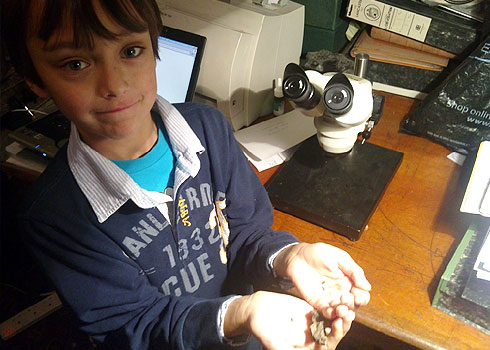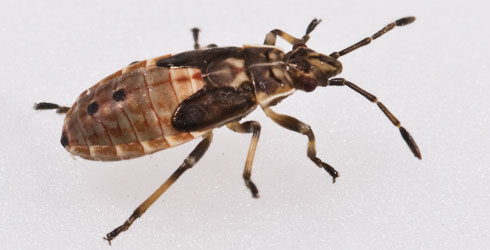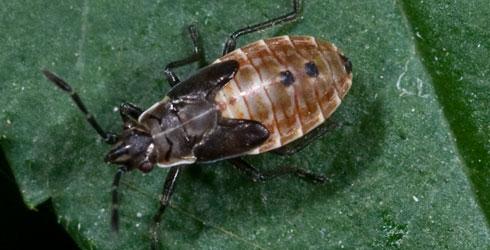Arocatus longiceps (plane tree bug)
Arocatus longiceps is a true bug that was originally described in 1872, but was first spotted in Britain, in central London in autumn 2006.
By summer 2007, it was the commonest insect in the Natural History Museum’s wildlife garden, but still no-one in the Department of Entomology knew what it was. At the same time it became common in several other European cities.
Mystery surrounded this insect and important taxonomic books led people to the wrong conclusion about its identity, but it was eventually identified as Arocatus longiceps thanks to international networking between scientists all over the UK and Europe.
Arocatus longiceps was identified as a species that has spread rapidly westwards from the eastern Mediterranean.
Species detail
-

Taxonomy
Arocatus longiceps is difficult to identify and is easily confused with one of its relatives that feeds on alder trees. Find out more.
-

Distribution
This insect is common in eastern Mediterranean regions, but has spread rapidly westwards. Discover where you might find it.
-

Biology
These bugs live on plane trees where they feed on the seeds, and hide under the tree’s flaking bark. Find out more about this insect and its home.
-

Behaviour
Arocatus longiceps produces a foul smell when crushed or disturbed, which helps protect against predation. Discover more about this insect and what happens when the immature bugs get dislodged from their treetop home.
-

Conservation
Arocatus longiceps is spreading rapidly and taking advantage of manmade habitats - mainly hybrid plane trees in towns and cities - so its future seems secure. Find out more.
Images

Nicholas Barclay shows specimens of Arocatus longiceps that he collected in the Museum's wildlife garden. Children often discover things that adults (in this case a building full of scientists) have missed!
© Max Barclay
Arocatus longiceps.
© Natural History Museum, London
Arocatus longiceps.
© Natural History Museum, London
Arocatus longiceps.
© Natural History Museum, LondonAbout the author

Max Barclay
Collections manager of the Museum's Coleoptera and Hemiptera collections. Responsibilities include managing a team of curators, administering loans, processing new material and facilitating collection access for visitors.
A word from the author
"The first specimen of Arocatus longiceps that I saw fell off a gatepost in March 2007 when I was going into the Museum’s wildlife garden with my young son Nicholas. He spotted it at once, as children do, and asked 'Daddy, what’s that?' and I had to say 'I don’t know'. It is not normal for an entomologist to not recognise a large and brightly coloured insect in central London!
"When you’re standing in the middle of a tropical rainforest, you expect to see insects that you’ve never seen before and that you can’t identify. When you pop out into the front garden of your workplace to eat your sandwiches, you don’t. The sudden appearance of enormous numbers of Arocatus longiceps in central London in 2007 puzzled a lot of people, and it was a couple of years before it was confidently identified."
